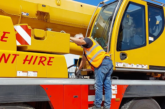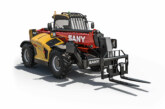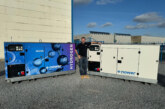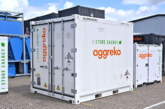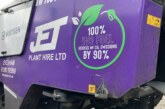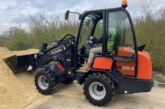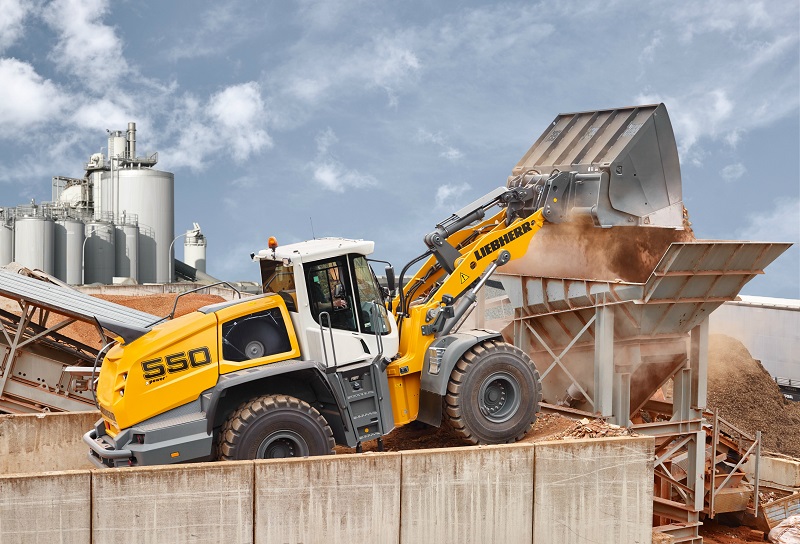
Throughout history the Germans have proven themselves to be masters of metal, boasting a tradition of engineering prowess across a whole swathe of industries.
One manufacturer that bestrides a good many on its own is Liebherr, because a company which remains perhaps best known for its cranes can also point to a whole range of more surprising innovations besides.
Walk into a kitchen and, as one of the largest manufacturers in Europe, there’s every chance you’ll encounter a Liebherr refrigerator. Board an Airbus passenger jet and it will be Liebherr landing gear that will safely see you to the ground.
Take a high speed train anywhere in the world and this still family-run firm’s tilting technology will be the force that 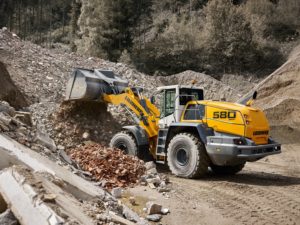 carries you through the countryside, whilst the wind farms that power our homes invariably include its ring gears in the turbines.
carries you through the countryside, whilst the wind farms that power our homes invariably include its ring gears in the turbines.
At least one reason why Liebherr can boast a huge range of solutions is that a sizeable proportion of its annual €9 billion turnover is reinvested in its people and product development.
The company’s earthmoving equipment bears all those hallmarks, and its XPower Wheel Loaders offer a host of benefits, including up to 30 per cent less fuel consumption.
Diesel is clearly a significant cost for operators and with the rate of the dollar against the pound post-Brexit it’s certainly not getting any cheaper.
Even at first glance the machinery-minded amongst contractors and plant hirers will realise that these wheel loaders look very different to what currently exists on the market, and this is in part because the XPower achieves its considerable percentage reduction in running costs through its weight distribution.
Whilst a conventional machine will feature both an engine and a counterweight the Liebherr wheel loaders feature a power train positioned at the rear, which means it is itself the counterweight, cutting down on the overall weight of the machine as a consequence, whilst also improving visibility.
 The engines will also offer maximum power at around 1,000-1,200 rpm, a low rev count that will save fuel, and reduce wear and tear on components.
The engines will also offer maximum power at around 1,000-1,200 rpm, a low rev count that will save fuel, and reduce wear and tear on components.
Moreover, the Liebherr Power Efficiency (LPE) software that controls the machine is designed to as far as possible maintain the engine output at the optimum point.
It is effectively monitoring what the driver is asking the machine to do and matching the engine, transmission and hydraulic settings accordingly.
The innovations don’t stop there, however, because there’s a further feature designed to maximise productivity across any task a wheel loader might be asked to perform.
Liebherr Wheel Loaders have traditionally been equipped with hydrostatic drives, a set up that is very good for digging applications and short loading cycles, Not only that but with no shifting interruptions, there’s also less chance of spilling carried material.
There are, however, some slight disadvantages, in that a lock-up torque convertor is far more efficient in acceleration, over longer distances and when climbing.
The answer is a Continuously Variable Transmission (CVT) gearbox which is described as a “supremely efficient way of operating a machine, which will deliver significant savings over its lifetime,” by the company’s Colin Scott.
With this system there are effectively two powertrains – hydrostatic and mechanical, and the proportion of each drive that’s functioning at any one time is continuously variable, depending on what the machine is being asked to do.
In slow speed digging applications the hydrostatic will be more in evidence but when traversing longer distances the mechanical drive kicks in, and all of this is achieved completely automatically, with no driver input.
Moreover, there’s no one part of the transmission that’s given the full torque at any one time, which again leads to less wear and tear, and with a direct ported hydrostatic drive there’s no hoses to blow.
The Tier 4 Final engine achieves the latest emissions regulations with AdBlue alone, without the addition of a DPF, which eliminates the need to service and replace them.
“I’m not going to tell you it’s a simple engine, because it’s not,” continues Colin, “but, in order to reduce maintenance  costs and cost of ownership, it’s as simple as we can make it.”
costs and cost of ownership, it’s as simple as we can make it.”
End users will measure productivity in the amount of material shifted, which is why Liebherr has also turned its attention to the buckets, where an increased capacity for each machine in the range means fewer loading cycles, and more tonnes moved per litre of fuel.
The longevity of the machine has also been addressed with stronger more durable components including an increase in axle size.
Another feature which holds Liebherr’s wheel loaders apart from its competitors is the two different types of kinematics available. The Z bar is the traditional digging option for loading rock, and there’s the Industrial for high tip buckets.
Use a Z bar on the latter application and you will not have much torque when the bucket is in the upper position. By contrast the Industrial may not dig quite as well but will suffice if working with aggregates. Both kinematic systems have been reinforced with greater break out force, with electro hydraulics as standard.
Liebherr XPower series is extensive from 6 to 32 tonnes, and 0.8 to 6m3 bucket capacity each of which benefits from 1,000 hour service intervals, which means for a typical 2,000 hour yearly usage, they would only need to be serviced twice a year.
For further information on the range of wheel loaders click here.


